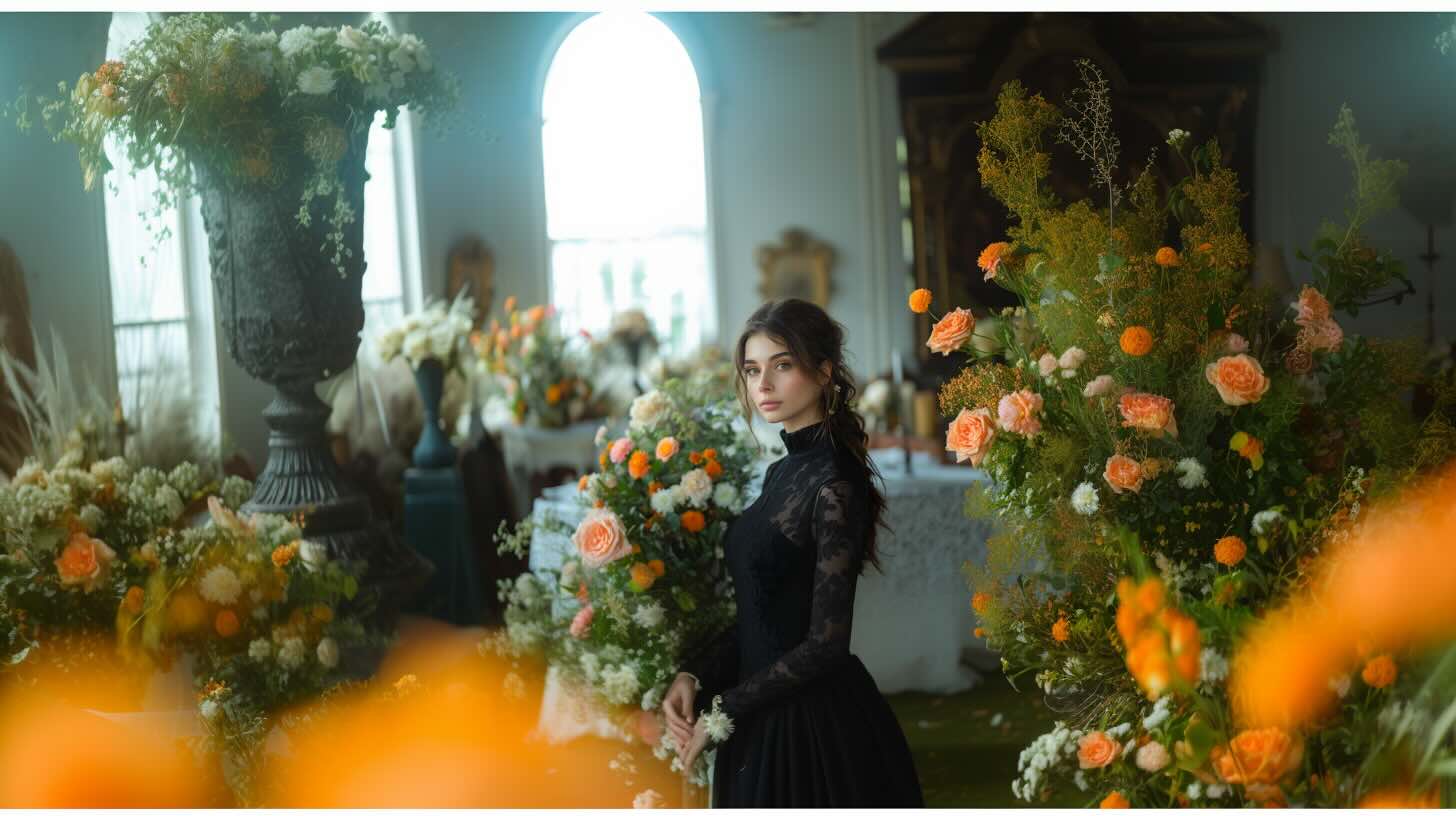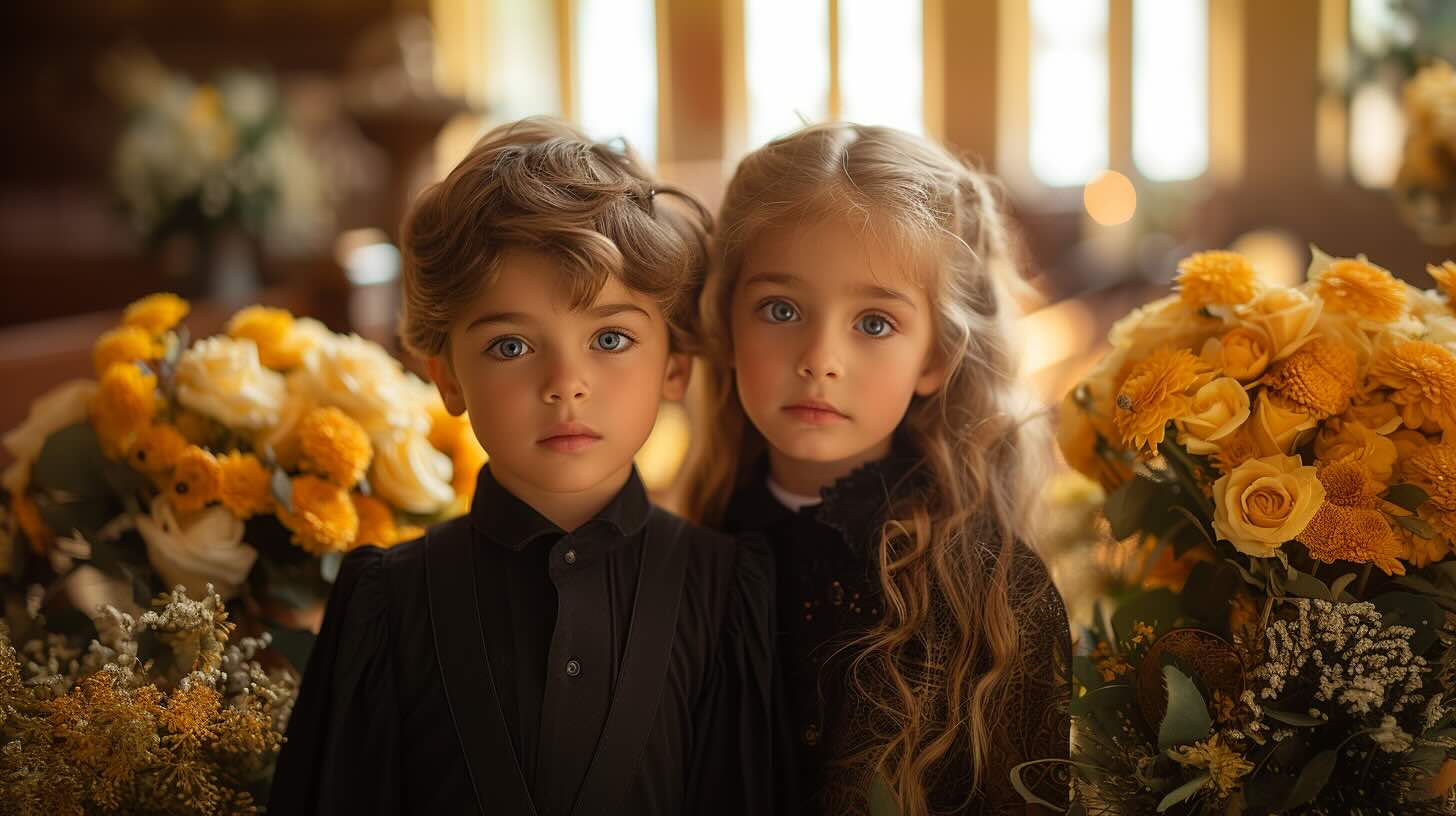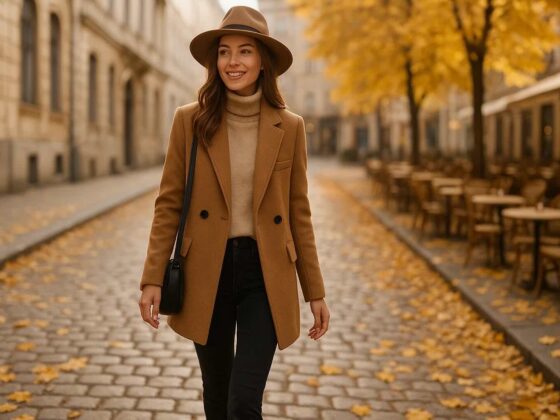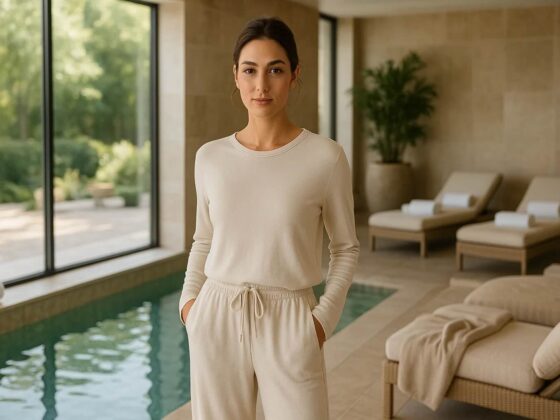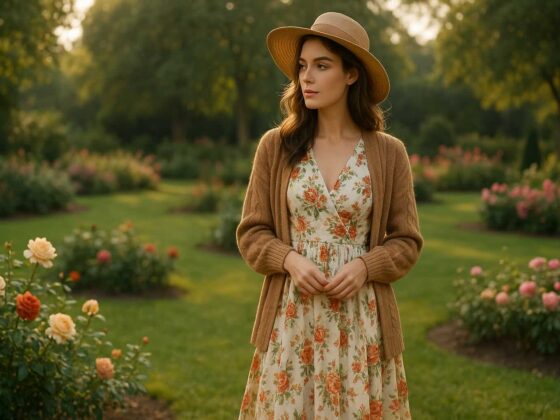When the time comes to attend a funeral, it’s natural to feel a mix of emotions, compounded by the uncertainty of what to wear. This solemn occasion calls for a display of respect, not just in our demeanour but equally in our choice of attire. Our guide demystifies funeral attire, ensuring you approach this delicate situation with the appropriate level of respect and consideration.
General Principles of Funeral Attire
Funerals are not the occasion for fashion statements. Our collective aim is to honour the deceased and offer comfort to the bereaved, with our attire reflecting this solemnity.
- Conservatism and Discretion: Opt for outfits that are understated and conservative. This isn’t the time for striking styles or bold patterns.
- Colour Palette: Dark, muted tones are preferred. Black, navy and dark grey symbolize mourning and respect.
- Setting and Cultural Expectations: Be mindful of the funeral setting and any cultural or religious dress codes.
- Seasonal Considerations: Choose fabrics appropriate for the weather, ensuring comfort without compromising formality.
Emphasis on Conservatism and Discretion
The cornerstone of funeral attire is its conservatism. This isn’t merely about tradition; it’s a form of expressing our respect and empathy towards those in mourning. Conservative dress helps to ensure that attention remains on the deceased and their family, rather than on what we are wearing. This means selecting outfits that are modest in design and fit, avoiding anything overly flashy, revealing, or which draws unnecessary attention. We aim to blend in, offering our support and presence as a comforting backdrop to the ceremony.
- For Men: This typically means a suit or, if not available, a dress shirt and trousers in dark colours. Ties should be simple and understated.
- For Women: Dresses or skirts of appropriate length, or tailored pantsuits, in subdued tones are advisable. Tops should cover the shoulders and chest.
The Significance of Color: Opting for Dark, Muted Tones
Colour plays a powerful role in conveying our emotions and intentions. In the context of a funeral, dark colours like black, navy, and dark grey are universally recognized symbols of mourning and respect. These colours are preferred because they are unobtrusive and reflect the gravity of the occasion. While black is the most traditional choice, other dark hues can also be appropriate, provided they maintain the solemn atmosphere expected at such gatherings.
- Avoid Bright Colours: Bright and neon colours can be seen as a sign of celebration, which may not align with the mood of a funeral service.
- Exceptions: Be mindful of any specific requests from the bereaved family, as some cultures or personal preferences may dictate a different approach to mourning attire.
Understanding the Setting and Cultural Expectations
The setting of the funeral and the cultural background of the deceased and their family can significantly influence appropriate attire. Different cultures and religions have unique traditions and expectations when it comes to mourning and funeral ceremonies. For instance, some cultures may prefer white or a specific colour other than black for mourning.
- Research: If you are unsure, it’s always best to research or ask about any specific attire preferences before attending a funeral.
- Adaptability: Be prepared to adapt your choice of attire to suit religious or cultural ceremonies, which may require specific garments or accessories.
Seasonal Considerations and Outdoor Services
The time of year and location of the funeral service (indoors or outdoors) can also dictate the most suitable attire. Comfort, in addition to respect, should be a guiding principle in selecting what to wear.
- Warm Weather: Opt for breathable fabrics in dark colours. Lightweight suits, linen dresses, and skirts can be appropriate choices.
- Cold Weather: Layering is key. Consider a dark coat, scarf, and gloves, ensuring these additional layers are also in keeping with the conservative and respectful tone of your outfit.
- Outdoor Services: Be prepared for the elements. For sunny days, a dark, unobtrusive umbrella or hat may be necessary; for wet weather, consider waterproof outerwear and shoes.
By adhering to these general principles, we ensure our attire is respectful, considerate, and appropriate for the solemnity of a funeral. It allows us to focus on what truly matters during these moments — offering our condolences, support, and presence to those mourning the loss of their loved ones.
Funeral Attire for Men
In the solemn atmosphere of a funeral, the attire chosen by men should communicate respect and empathy towards the bereaved. This section explores the key components of funeral attire for men, emphasizing the importance of a well-fitted suit, the appropriateness of shirt and tie selection, and the considerations for shoes, socks, and accessories. Each element plays a crucial role in presenting a respectful and dignified appearance.
| Item | Guidelines |
|---|---|
| Suit | Dark, well-fitted, unembellished |
| Shirt | White or subdued colours, neatly pressed |
| Ties | Dark, minimal patterns |
| Shoes & Socks | Clean, polished dark shoes; dark socks |
| Accessories | Conservative, minimal jewellery |
Suits
A dark suit is a universal symbol of respect and mourning. Ensure it’s well-fitted and free of any ostentatious details.
Shirts and Ties
A crisp, white shirt underlines sincerity, while a dark tie conveys sobriety. Patterns should be minimal and not distract from the solemnity of the occasion.
Shoes and Accessories
Polished dark shoes and minimal accessories underscore the gravity we bring to the occasion, ensuring our presence is respectful and understated.
Suit: The Importance of a Well-Fitted, Dark-Colored Suit as a Mark of Respect
A suit represents the pinnacle of men’s formal wear, especially at a funeral, where it symbolizes respect and solemnity. Choosing a dark-coloured suit — preferably in black, navy, or dark grey — is not just a tradition; it’s a visual expression of mourning and respect for the deceased and their family.
- Fit is Key: A well-fitted suit looks sharp and respectful. It should not be too tight or too loose. If necessary, consider having your suit tailored for the best possible fit.
- Fabric Choice: Opt for suits made from materials appropriate for the season — lighter fabrics for summer and heavier ones for colder months, ensuring comfort without sacrificing formality.
Shirt: Recommendations for a Crisp, White Dress Shirt or Other Subdued Colors
The shirt serves as the foundation of your suit ensemble. A crisp, white dress shirt is a classic choice, offering a sharp contrast to a dark suit and conveying a sense of purity and respect.
- Colour Options: If you prefer not to wear white, other subdued colours like light grey or pale blue are acceptable, provided they complement the suit and maintain the overall solemnity.
- Fabric and Fit: Choose a shirt made from breathable, high-quality fabric, ensuring it’s well-pressed and fits properly without being overly tight or loose.
Ties: Guidance on Choosing Dark Ties, Possibly with Subtle Patterns
The tie is a small but significant element of funeral attire, allowing a hint of personal expression while adhering to the respectful tone of the occasion.
- Colour and Pattern: Dark ties in solid colours or with subtle patterns are most suitable. Avoid bright colours or loud, attention-grabbing patterns.
- Material: Silk or high-quality synthetic fabrics are preferable for a polished look.
Shoes and Socks: The Necessity for Clean, Polished Dark Shoes and Dark Socks
Footwear should not be overlooked, as it completes the outfit and contributes to the overall impression of respect and dignity.
- Shoe Selection: Opt for clean, polished dark shoes. Oxfords, derbies, or other dress shoes are appropriate. Ensure they are in good condition and free from scuffs or excessive wear.
- Socks: Dark socks are a must, ideally matching the colour of your shoes or pants. This attention to detail maintains the cohesive and formal appearance of your attire.
Accessories: Limiting Jewelry and Opting for Conservative Watches and Belts
Accessories should be chosen with care, emphasizing simplicity and respectfulness over personal flair.
- Jewellery: Keep jewellery to a minimum. A wedding band and a conservative watch are generally acceptable but avoid flashy or ostentatious pieces.
- Belts: Choose a simple, dark belt that matches your shoes. The belt should be understated, serving to complement your suit rather than stand out.
In conclusion, selecting appropriate funeral attire for men is about balancing formality with respectfulness. By adhering to the guidelines outlined for suits, shirts, ties, shoes, socks, and accessories, you ensure that your appearance is appropriate for the occasion, allowing you to pay your respects with dignity. Remember, the focus should always be on supporting the bereaved, with your attire reflecting a solemn and respectful attitude towards the solemnity of the event.
Funeral Attire for Women
For women, selecting attire for a funeral is about finding a balance between respectfulness and personal comfort. This section provides detailed guidance on choosing appropriate dresses, skirts, blouses, pantsuits, shoes, and accessories that are suitable for such a solemn occasion.
| Item | Guidelines |
|---|---|
| Dresses & Skirts | Knee-length or longer, dark colours |
| Blouses | Modest, conservative, muted tones |
| Pantsuits | Formal, appropriate cut and colour |
| Shoes | Closed-toe, low-heeled |
| Accessories | Minimal jewelry, conservative handbags |
Dresses and Skirts
Opt for dresses and skirts that are respectful in length and colour, leaning towards dark, muted tones that signify mourning.
Blouses and Pantsuits
Choose blouses that are modest and conservative. Formal pantsuits are equally appropriate, provided they adhere to the colour scheme and formality of the occasion.
Shoes and Accessories
Shoes should be closed-toe and comfortable for standing periods. Accessories should be kept to a minimum, with a focus on simplicity and elegance.
Dresses and Skirts: Opting for Knee-length or Longer in Dark Colors
Dresses and skirts are traditional choices that can convey the right level of formality and respect at a funeral.
- Length: Choose garments that are knee-length or longer. Longer lengths are preferred as they are universally considered more formal and respectful.
- Colour: Dark colours such as black, navy, or dark grey are most appropriate. These colours reflect the solemn nature of the occasion and are a mark of respect for the deceased and their family.
- Style: Opt for simple, unadorned styles. Avoid high slits, plunging necklines, or anything overly elaborate that might draw attention.
Blouses: Suggestions for Modest, Conservative Tops in Muted Tones
The choice of blouse can significantly influence the overall appropriateness of your outfit.
- Conservatism: Select tops that cover the shoulders and chest. High necklines, such as a turtleneck or a simple crew neck, are advisable.
- Color and Pattern: Stick to muted tones that complement your skirt or pants. Solid colors are preferable, though subtle patterns may be acceptable if they are not too bright or distracting.
- Fabric: Choose fabrics that are not too sheer or clingy. The goal is to maintain a dignified appearance that is appropriate for the occasion.
Pantsuits: Guidance on Appropriate, Formal Pantsuits
Pantsuits can be an excellent choice for women who prefer not to wear dresses or skirts, offering a blend of formality and modernity.
- Fit and Style: Ensure the pantsuit is well-fitted, tailored to your body without being too tight. The style should be conservative, avoiding trendy cuts or embellishments.
- Color: As with dresses and skirts, opt for dark colors. Black, navy, and charcoal are suitable choices that convey the appropriate level of solemnity.
- Material: Select high-quality materials that hold their shape and present a polished appearance throughout the service.
Shoes: Recommendations for Closed-toe, Low-heeled Shoes
Shoes play a crucial role in completing your funeral attire, with comfort being as important as style.
- Style: Closed-toe shoes are the most appropriate choice for funerals. They offer a polished look while being conservative.
- Heel Height: Choose shoes with a low heel to ensure comfort, especially during standing periods or if you need to walk to different locations during the funeral service.
- Colour: Stick to dark colours that match your outfit. Black is always a safe choice, but navy or dark brown can also be appropriate depending on your ensemble.
Accessories: Advice on Minimal Jewelry and Conservative Handbags
Accessories should be chosen with the aim of complementing your outfit without becoming focal points themselves.
- Jewellery: Keep jewellery to a minimum. A simple pair of earrings, a watch, and a modest necklace can be enough. Avoid large, flashy pieces that could be distracting.
- Handbags: Choose a small to medium-sized handbag in a conservative style and colour. The bag should be large enough to hold essentials but not so large as to be cumbersome.
In summary, when it comes to funeral attire for women, the emphasis should be on conservative, respectful choices that reflect the solemnity of the occasion. By selecting appropriate dresses, skirts, blouses, pantsuits, shoes, and accessories, you can ensure that your presence is dignified and appropriate, allowing you to focus on offering your condolences and support to those in mourning.
Cultural and Religious Considerations
When attending a funeral, it’s crucial to recognize that cultural and religious traditions can significantly influence appropriate attire. These traditions often carry deep significance and are integral to the mourning process. Understanding and respecting these customs not only shows respect for the deceased and their family but also reflects a broader respect for diversity and cultural sensitivity.
Addressing Attire Variations Across Different Cultures and Religions
Different cultures and religions have unique customs surrounding death and mourning, including specific expectations regarding funeral attire. Here are general principles to keep in mind:
- Research and Ask: If you are unsure about the attire expectations for a funeral, it’s always best to research or ask family members or close friends of the deceased. They can guide on what is considered respectful within their cultural or religious context.
- Err on the Side of Conservatism: When in doubt, choosing conservative, understated attire is usually a safe bet. However, be open to adapting if you learn that the cultural or religious norms differ significantly from Western traditions.
Specific Examples of Attire Expectations in Diverse Funeral Practices
- Christian Funerals: Traditionally, dark and conservative attire is expected. Men often wear suits, and women wear dresses or skirts of modest length. However, variations exist among denominations, with some adopting more relaxed dress codes.
- Jewish Funerals: Mourning attire should be simple and not ostentatious. Men typically wear a head covering (yarmulke or kippah), and black is commonly worn by attendees.
- Islamic Funerals: Modesty is key in Islamic funeral attire. Women should wear loose-fitting clothes that cover their arms, legs, and hair, typically using a hijab. Men should wear long sleeves and trousers. Bright colours are usually avoided.
- Hindu Funerals: White is traditionally worn by mourners to signify purity and rebirth, contrasting with the Western tradition of wearing black. Clothing is typically simple and non-embellished.
- Buddhist Funerals: White is also the colour of mourning in many Buddhist traditions, symbolizing liberation. However, in some cultures, black may be worn by attendees. The emphasis is on simplicity and modesty.
- Sikh Funerals: There are no strict clothing regulations, but modesty and simplicity are valued. Dark, subdued colours are commonly worn out of respect for the deceased.
These examples underscore the importance of cultural and religious sensitivity when choosing funeral attire. By respecting these traditions, we pay homage to the deceased’s cultural heritage and religious beliefs, offering support to the bereaved in a manner that honours their loved one’s legacy. Always remember, the primary goal is to convey respect and solidarity with those who are mourning, and adapting our attire to reflect cultural and religious considerations is a significant part of that process.
What to Avoid
In the context of funeral attire, knowing what not to wear is just as important as understanding what is appropriate. Certain styles, colours, and accessories may be considered disrespectful or simply out of place on such a solemn occasion. This section outlines the key items and characteristics to avoid in order to ensure that your attire is respectful and appropriate for a funeral service.
- Casual Clothing: Jeans, sneakers, and casual T-shirts are generally inappropriate.
- Bright Colours: Avoid bright or neon colours that could be seen as disrespectful.
- Distracting Patterns: Keep patterns subtle and unobtrusive.
Clothing and Accessories to Avoid
- Overly Casual Items: Jeans, shorts, T-shirts, athletic wear, and flip-flops are typically too informal for a funeral. Such items can convey a lack of respect for the gravity of the occasion.
- Bright Colors: While some cultures do use bright colours to celebrate the life of the deceased, in many Western traditions, bright or neon colours are seen as too celebratory and not reflective of the mourning atmosphere.
- Distracting Patterns: Loud or bold patterns can draw attention away from the focus of the service. It’s best to avoid clothing with prominent logos, slogans, or graphic designs.
- Revealing Clothing: Overly revealing Outfits, such as short skirts, low-cut tops, or anything that exposes a significant amount of skin, are generally considered inappropriate. The aim is to maintain a conservative and respectful appearance.
- Flashy Accessories: Large, ostentatious jewellery, bright headwear, or any particularly eye-catching accessory should be avoided. The same goes for handbags or other items that are brightly coloured or patterned.
Guidance on Avoiding Disrespectful or Out-of-Place Attire
- Reflect on the Venue and Audience: Consider the location of the funeral (e.g., place of worship, outdoors, funeral home) and who will be attending. This can help guide your attire choices to ensure they are respectful and appropriate.
- When in Doubt, Choose Conservatism: If you’re unsure about what to wear, opting for conservative, muted tones and simple styles is usually the safest choice.
- Follow the Family’s Wishes: In some cases, the family of the deceased may specify a dress code or request attendees wear something specific to honour the deceased. Always prioritise these requests over traditional guidelines.
By avoiding attire that is overly casual, brightly coloured, or otherwise distracting, attendees can show their respect for the deceased and their family during this difficult time. The key is to choose attire that allows you to blend into the background, offering your support and presence without drawing attention to yourself. This respectful approach ensures that the focus remains on mourning the loss and celebrating the life of the deceased.
Children’s Attire
Dressing children and young adults for a funeral requires a thoughtful balance between formality and comfort. While their attire needs to be appropriate for the solemnity of the occasion, it’s equally crucial to ensure that they are comfortable and able to move freely. This section offers guidance on selecting suitable funeral attire for children and young adults, ensuring they pay their respects in a respectful and age-appropriate manner.
Guidelines for Choosing Appropriate Attire for Children
- Opt for Muted Tones: While the same rules of dark, muted colours apply to children’s attire as they do for adults, there’s a bit more flexibility. Dark greys, deep blues, and even softer shades like beige can be appropriate for children. Avoid overly bright or neon colours.
- Comfort is Key: Choose fabrics that are soft and non-irritating to the skin. Children are more sensitive to uncomfortable clothing, which can make them fidgety and restless. Ensure the fit allows for natural movement.
- Formality Meets Functionality: For boys, a simple button-down shirt with dark trousers can be sufficiently formal. For girls, a modest dress or a skirt and blouse combo in subdued colours works well. Consider layering with a sweater or jacket for added warmth if needed.
- Footwear: Comfortable, closed-toe shoes are advisable. Avoid sneakers if possible, but if they are the most formal and comfortable option you have for your child, choose black or another dark colour.
- Simplicity Over Style: While it might be tempting to dress children in more stylish or trendy outfits, remember the focus of the day. Simple, understated clothing that blends into the occasion is preferable.
Tips for Young Adults
- Follow Adult Guidelines with Flexibility: Young adults should generally adhere to the same guidelines as adults, though there may be more room for individual expression in their choices of accessories or styles, provided they remain respectful and not too casual.
- Encourage Their Input: Young adults may have their understanding and feelings about the occasion. Encouraging them to express themselves within the bounds of respectful attire can be a way to involve them in the process and help them feel comfortable with what they are wearing.
Additional Considerations
- Weather and Location: If the service is outdoors or involves walking between locations, consider the practicality of outerwear and choose weather-appropriate, respectful options.
- Cultural or Religious Customs: Be mindful of any specific attire requirements dictated by cultural or religious customs and prepare children’s outfits accordingly.
- Preparation and Planning: Especially with younger children, have a backup outfit ready in case of spills or accidents. This ensures they remain tidy and comfortable throughout the service.
Dressing children for a funeral doesn’t have to be a daunting task. By prioritizing muted colors, comfort, and appropriateness, you can ensure that children and young adults are dressed respectfully for the occasion. This not only teaches them the importance of showing respect through their attire but also ensures they are comfortable and free from unnecessary distractions during the service.
Key Takeaway
The essence of funeral attire is respect — for the deceased, their loved ones, and the solemnity of the occasion. Opting for dark, conservative clothing is a universal way to express this respect, while also ensuring we are dressed appropriately for the gravity of the event.
Conclusion
In our journey through life’s most solemn moments, how we present ourselves at funerals speaks volumes about our respect and empathy for those mourning. By adhering to the guidelines we’ve discussed, we ensure our attire is not a point of distraction but a testament to our support and respect for the bereaved. Let us dress in a way that honours the memory of the deceased, providing a comforting presence in a time of grief.
Frequently Asked Questions
Is it always necessary to wear black to a funeral? While black is traditional and preferred, other dark colours like navy or dark grey are also acceptable and can be worn respectfully.
Can I wear jeans to a funeral? Jeans are generally considered too casual for such a solemn occasion, unless the family has specified a more casual dress code.
What should I do if I don’t own a suit or formal attire? Aim for the most conservative and clean outfit you have, focusing on dark colours. It
‘s the effort and intent to show respect that truly counts.
Are there any exceptions to wearing dark colours? Yes, in some cases, families may request guests to wear bright colours or specific attire to celebrate the life of the deceased. Always follow the family’s wishes.
How should I choose my accessories? Keep accessories to a minimum, focusing on simplicity and modesty. This is not the time for ostentatious displays or fashion statements.


